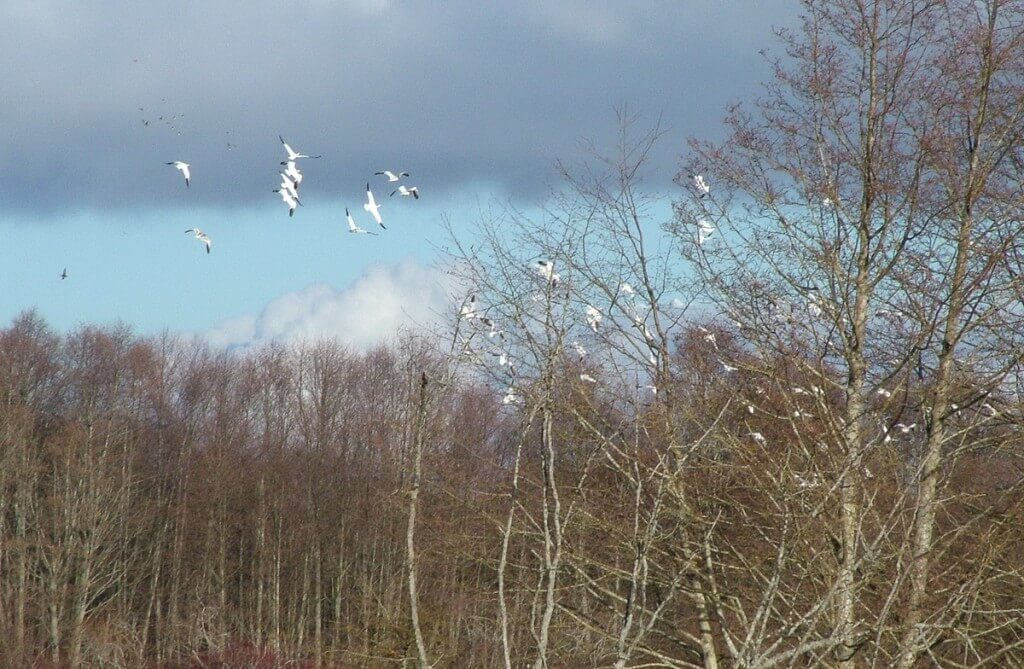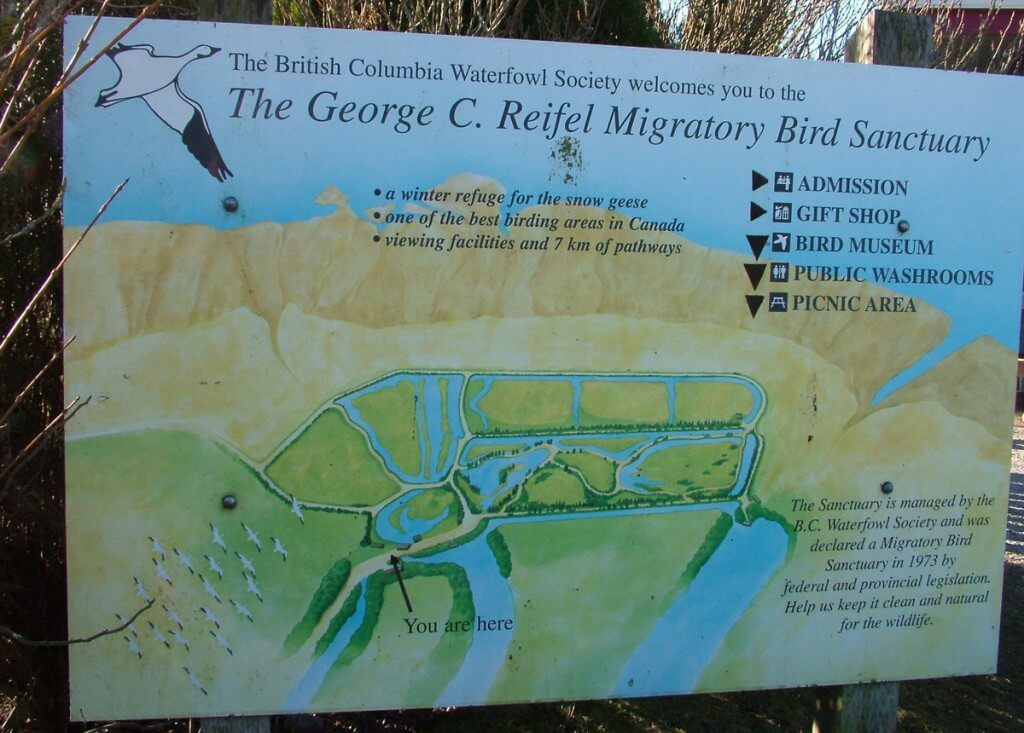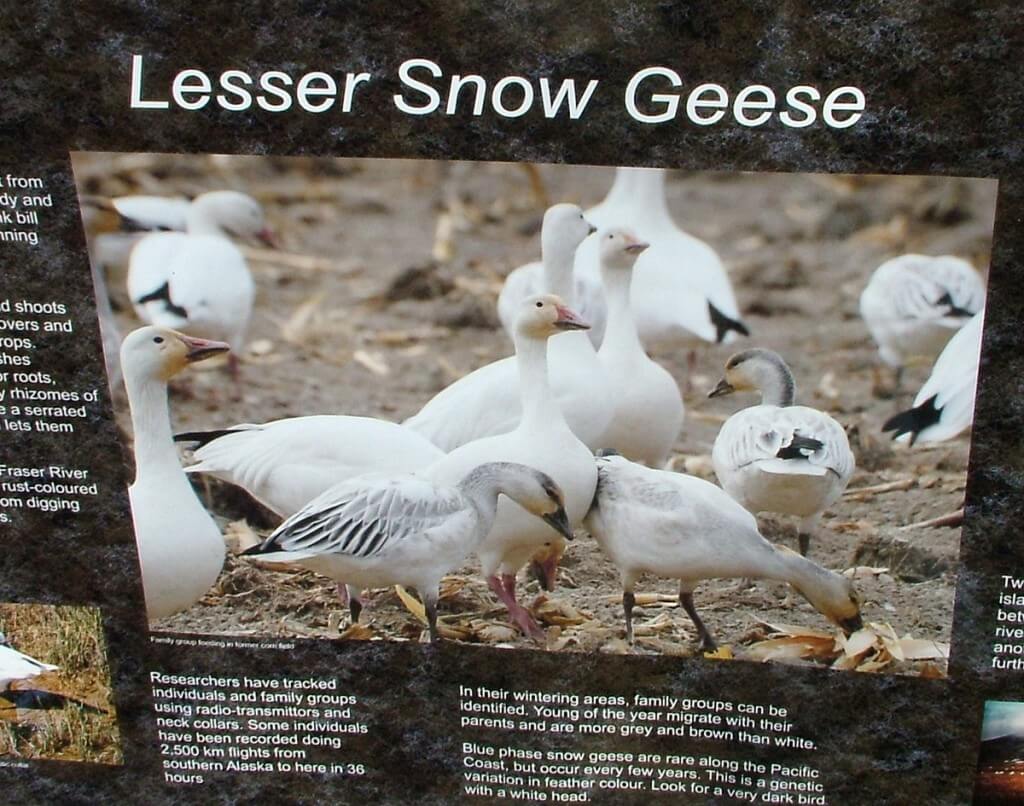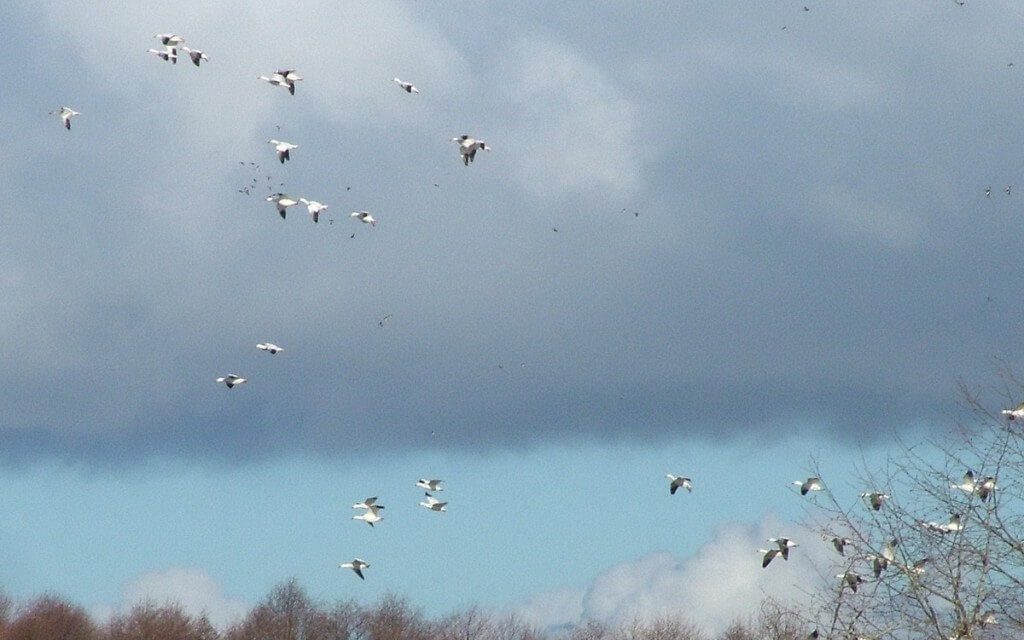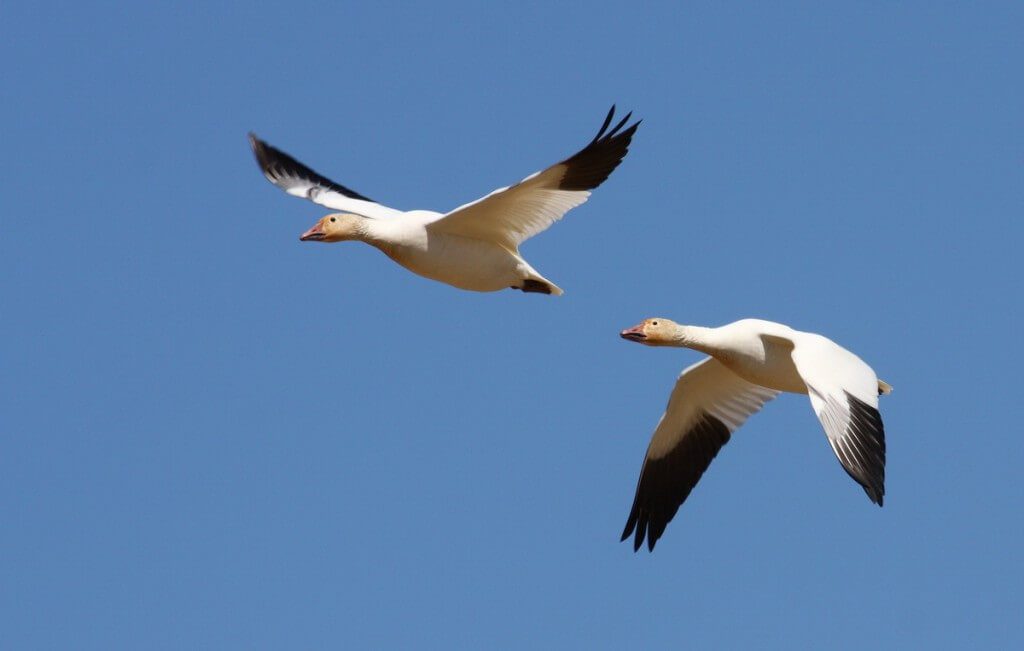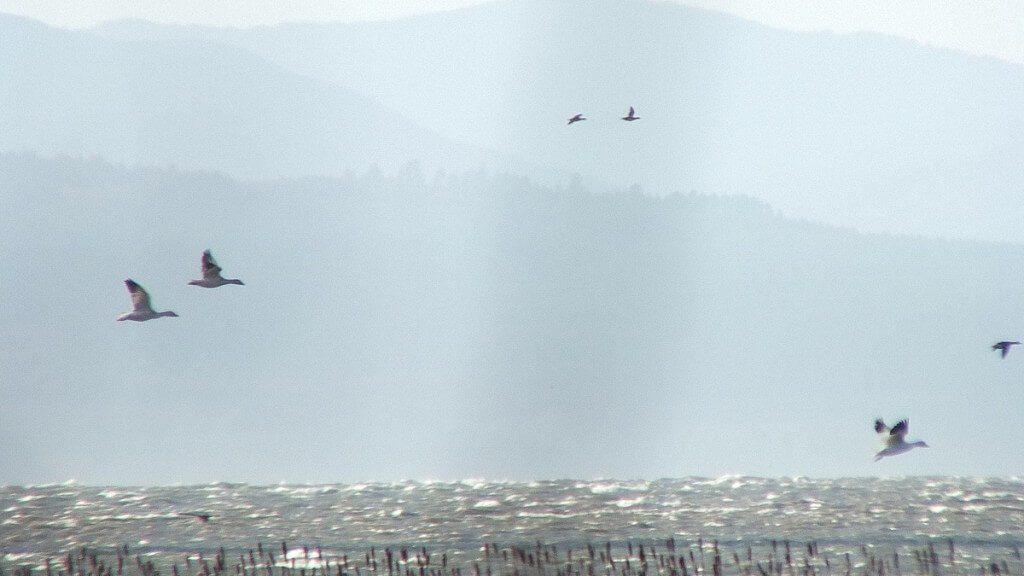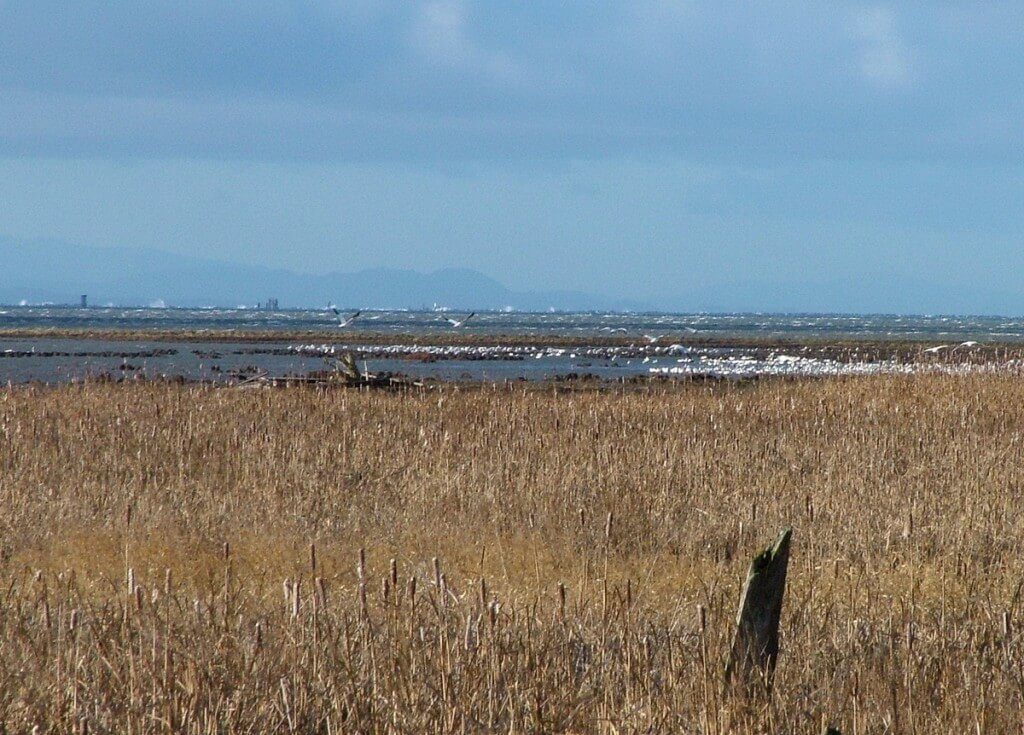Lesser Snow Geese At Reifel Bird Sanctuary
Bob and I could not overlook the cacophonous racket overhead when a large flock of Lesser Snow Geese flew by. As we took the circuitous route around the George C. Reifel Migratory Bird Sanctuary, one section of the trail seemed to parallel the flight path of the Geese across Westham Island.
The Reifel Migratory Bird Sanctuary is a protected area of managed wetlands, marshes and dykes located in Delta, British Columbia. It’s 850 acres make up part of Westham Island, which is situated at the mouth of the Fraser River. It is one of only 92 areas in Canada determined to be a bird sanctuary protected by the Government of Canada.
It is because of its location in the Fraser River estuary of coastal British Columbia that the Sanctuary attracts very large dense flocks of Lesser Snow Geese. A flock can consist of up to 20,000 birds, all of which feed at, rest in or fly over the Sanctuary, adjacent flat farmland and the intertidal marshes of the estuary.
I find it fascinating to know that the Lesser Snow Geese we saw at the Sanctuary are part of the nesting population from Wrangel Island. Wrangel Island is found north of Siberia and lies in the Arctic Ocean; it belongs to Russia. The birds that nest on Wrangel Island separate into two different groups when heading off to their winter grounds, but both groups use the Pacific Flyway to achieve their destinations.
As Bob and I navigated the trail on the western fringe of the Sanctuary, it brought us ever closer to the gathering masses of Snow Geese on the shore of Westham Island. What we were seeing represented a small percentage of the population that normally winters there. At its peak, between October and mid-December, the population of Lesser Snow Geese wintering at Reifel can number upwards of 35,000 birds, about half of those that come south from Wrangel Island.
The Lesser Snow Geese have several options for taking a break on their trip from Wrangel Island and are known to stop in mainland Russia, St. Lawrence Island in the Bering Sea, both western and southern Alaska, as well as the mouth of the Stikine River in northern British Columbia. It is a staggering 5,000-kilometre (3,100 mile) trip. Some of the Geese have been known to cover the distance between Alaska and Reifel Bird Sanctuary, 2,500 kilometres (1,550 miles), in less than 36 hours.
Mature Lesser Snow Geese have white bodies with black-tipped wings, a pink bill and pink feet. A pair will mate for life, and each year will raise on average three to four young. Interestingly, during the summer months, both the adult geese and young birds are flightless. This aids scientists who wish to band or tag the Geese. A cooperative effort is made by scientists from Russia, U.S.A. and Canada to track the migratory movements of the Lesser Snow Geese.
Lesser Snow Geese have found an ideal location for their winter grounds because the Delta region provides ample food choices. The estuary is rich in intertidal marsh plants such as bulrushes, and the spring season brings on the fresh growth of grasses and sedges, both of which are highly desired. The rich starch reserves in the roots and rhizomes of bulrushes are rooted out using the Geeses’ strong bills with the result that their head feathers become tinted orange from the iron-rich soils.
Assisting the plight of the Snow Geese is the Delta Farmland and Wildlife Trust. A program called “Greenfields” has local farmers coordinating the fall planting of green grass cover for the Geese, while potatoes and grains leftover after harvesting are welcome supplements to their diet. These efforts have contributed to the overall burgeoning health and survival of the Snow Geese.
The total number of Lesser Snow Geese that spend the winter in that region, between 50,000 and 100,000, is known as the Fraser-Skagit flock, which alternates between the Fraser River and Skagit River estuaries. Around about mid-December up until February, the wintering flock at Reifel Sanctuary, 35,000 or more Geese, migrates to the southern reaches of the winter grounds near the Skagit River in the State of Washington. There, they join the remainder of this sub-population of Lesser Snow Geese and wait until it is time to return to the Fraser River in the spring. When the time is right, all the birds return to Wrangel Island for nesting. We were fortunate to have seen as many Lesser Snow Geese as we did, given the time of year.

